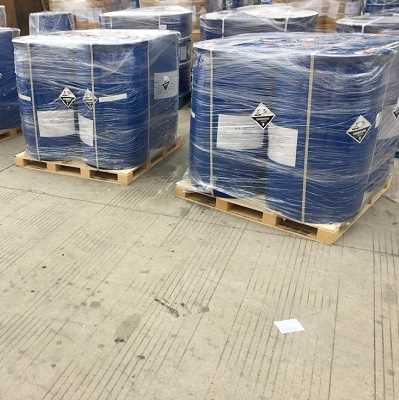

2021-05-27
1,6-Diaminohexane, CAS No. 124-09-4, molecular formula C6H16N2, molecular weight 116.21. Most of this product is used to synthesize nylon 66 and 610 resins, and also used to synthesize polyurethane resins, ion exchange resins and hexamethylene diisocyanates, as well as curing agents for urea-formaldehyde resins, epoxy resins, etc., organic crosslinking agents, etc., It is also used as stabilizer and bleaching agent in textile and paper industry, corrosion inhibitor of aluminum alloy and emulsifier of chloroprene rubber, etc. (You can also check details about 1,6-Diaminohexane from product list.)
Introduction
English name: 1,6-Diaminohexane
Alias name: 1,6-diaminohexane; hexamethylene diamine; hexamethylene diamine; hexyl methylene diamine; hexane diamine
More aliases: 1,6-hexane diamin
Molecular formula: C6H16N2
Molecular weight: 116.21
Numbering system
CAS Number: 124-09-4
MDL number: MFCD00008243
EINECS number: 204-679-6
RTECS number: MO1180000
BRN number: 1098307
Property data
1. Properties: Colorless flake crystals with ammonia smell.
2. Melting point (℃): 42~45
3. Boiling point (℃): 205
4. Relative density (water = 1): 0.85
5. Relative vapor density (air=1): 4.01
6. Saturated vapor pressure (kPa): 2.00 (90℃)
7. Heat of combustion (KJ/mol): -440
8. Critical pressure (MPa): 3.29
9. Octanol/water partition coefficient: 0.35
10. Flash point (℃): 71 (OC)
11. Upper explosion limit (%): 6.3
12. Lower explosion limit (%): 0.7
13. Solubility: easily soluble in water, slightly soluble in ethanol, benzene and ether.
Upstream raw material: hexamethylene diamine.
Downstream products: phosphating agent.
Toxicological data
1. Acute toxicity LD50: 750mg/kg (rat oral); 1110mg/kg (rabbit skin);
2. Irritant No information
3. Subacute and chronic toxicity Rats were exposed to the poison at a concentration of 7mg/m3 for 3 and a half months, and there were histological changes in the blood vessels of the lung, liver and kidney. Repeated administration of hexamethylenediamine to guinea pigs caused anemia, weight loss, and mild degeneration of the kidney and liver and myocardium under the microscope.
4. The lowest oral toxic dose (TDLo) for other rats: 3g/kg (administered on the 6th to 16th day of pregnancy), causing embryo toxicity and abnormal development of the liver system. The lowest oral toxic dose (TDLo) for rats: 1840mg/kg (for 6-16 days of pregnancy), causing abnormal development of the genitourinary system.
Specification
Tests |
Specifications |
Appearance |
Colorless transparent crystal |
Color(APHA) |
≤ 5 |
Purity |
99.0%min. |
Application
1. Most of this product is used to synthesize nylon 66 and 610 resin, also used to synthesize polyurethane resin, ion exchange resin and hexylene diisocyanate, as well as curing agent for urea-formaldehyde resin, epoxy resin, etc., organic crosslinking agent It is also used as stabilizer and bleaching agent in textile and paper industry, corrosion inhibitor of aluminum alloy and emulsifier of neoprene. Hexanediamine and hydrochloric acid form a salt below 28°C to obtain 1,6-hexamethylenediamine hydrochloride (6055-52-3), which can be used to produce chlorhexidine acetate, a bactericide. Hexanediamine also has some applications in the production of adhesives, aviation coatings and rubber vulcanization accelerators.
2. This product is used as a curing agent for urea-formaldehyde resin and epoxy resin. The dosage is 15 parts, and the curing condition is 25℃ for 1 day, which can improve the flexibility of the product. This product is used to prepare nylon 66, nylon 610, adhesives and coatings. Also used as a rubber vulcanization accelerator.
3. Used in organic synthesis, production of polymers (such as nylon 66), and also used as epoxy resin curing agent and chemical reagent.
Packing photo
